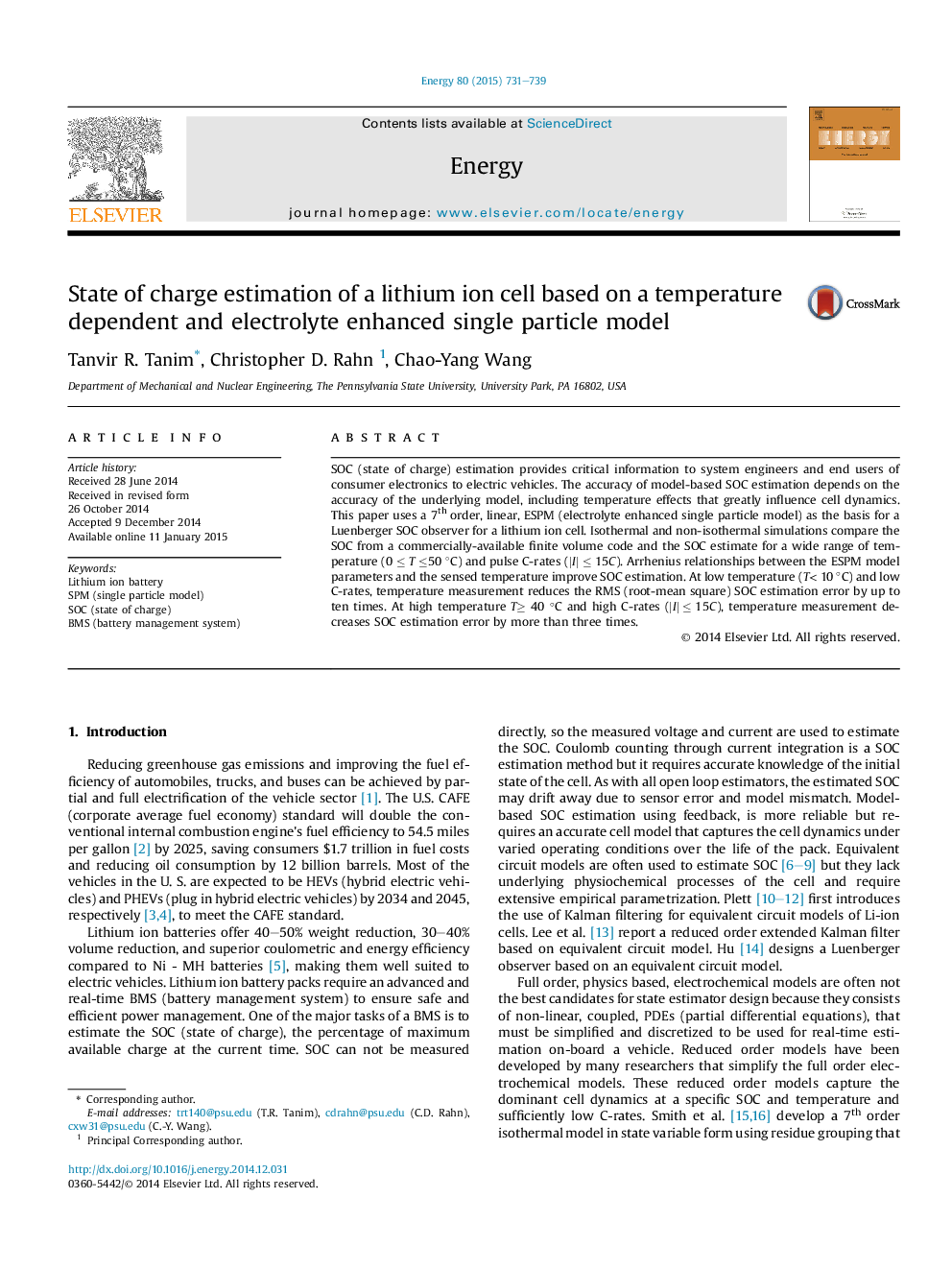| Article ID | Journal | Published Year | Pages | File Type |
|---|---|---|---|---|
| 1732047 | Energy | 2015 | 9 Pages |
•Developed a SOC estimator based on a 7th order, isothermal, and electrolyte enhanced single particle model.•Explicitly included measured cell temperature to improve SOC estimation accuracy.•Identified the accurate operating ranges of isothermal and temperature dependent estimators.•In terms of C-rate and temperature.
SOC (state of charge) estimation provides critical information to system engineers and end users of consumer electronics to electric vehicles. The accuracy of model-based SOC estimation depends on the accuracy of the underlying model, including temperature effects that greatly influence cell dynamics. This paper uses a 7th order, linear, ESPM (electrolyte enhanced single particle model) as the basis for a Luenberger SOC observer for a lithium ion cell. Isothermal and non-isothermal simulations compare the SOC from a commercially-available finite volume code and the SOC estimate for a wide range of temperature (0 ≤ T ≤50 °C) and pulse C-rates (|I|≤15C|I|≤15C). Arrhenius relationships between the ESPM model parameters and the sensed temperature improve SOC estimation. At low temperature (T< 10 °C) and low C-rates, temperature measurement reduces the RMS (root-mean square) SOC estimation error by up to ten times. At high temperature T≥ 40 °C and high C-rates (|I|≤15C|I|≤15C), temperature measurement decreases SOC estimation error by more than three times.
